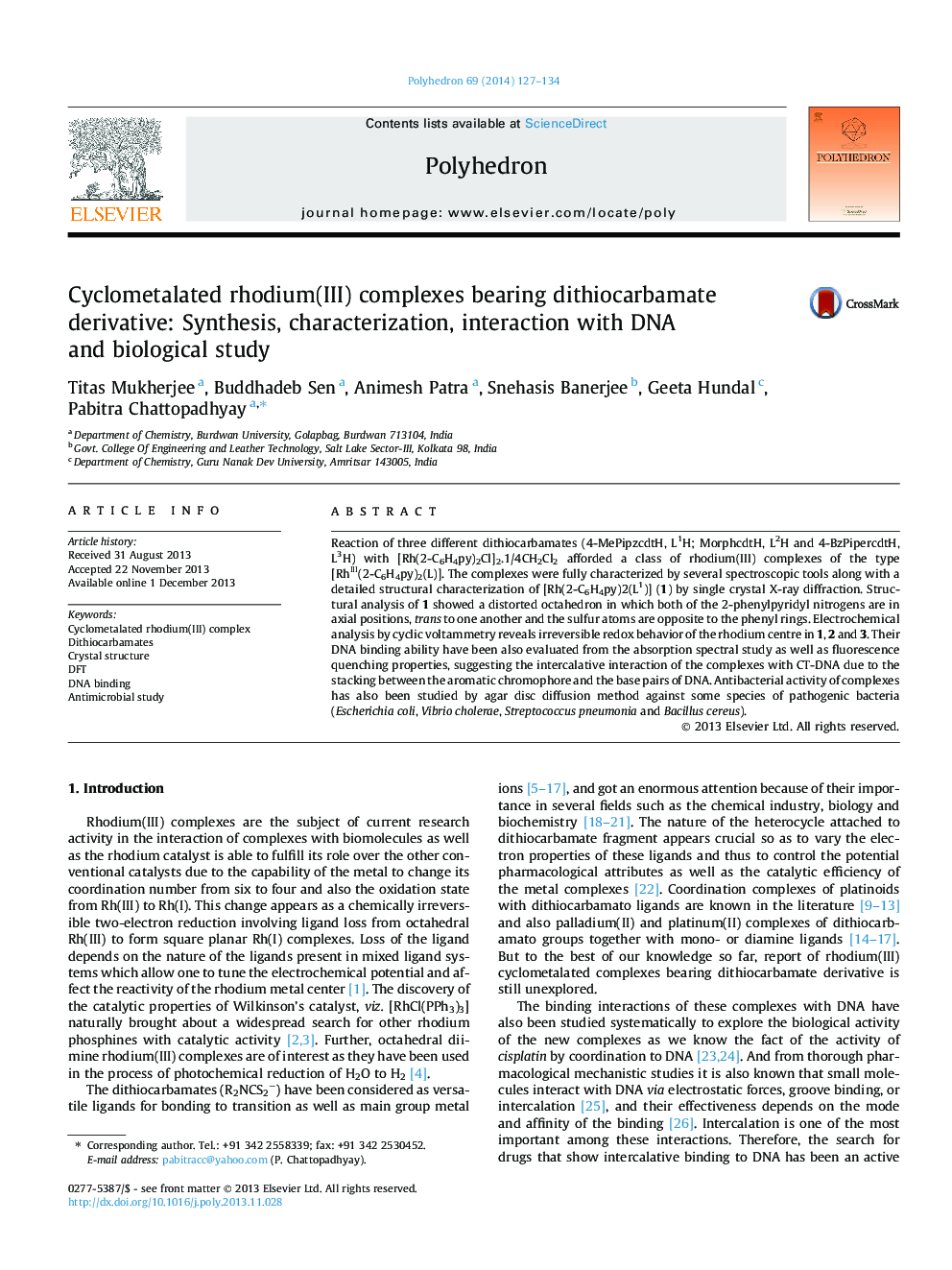| Article ID | Journal | Published Year | Pages | File Type |
|---|---|---|---|---|
| 1338069 | Polyhedron | 2014 | 8 Pages |
Reaction of three different dithiocarbamates (4-MePipzcdtH, L1H; MorphcdtH, L2H and 4-BzPipercdtH, L3H) with [Rh(2-C6H4py)2Cl]2.1/4CH2Cl2 afforded a class of rhodium(III) complexes of the type [RhIII(2-C6H4py)2(L)]. The complexes were fully characterized by several spectroscopic tools along with a detailed structural characterization of [Rh(2-C6H4py)2(L1)] (1) by single crystal X-ray diffraction. Structural analysis of 1 showed a distorted octahedron in which both of the 2-phenylpyridyl nitrogens are in axial positions, trans to one another and the sulfur atoms are opposite to the phenyl rings. Electrochemical analysis by cyclic voltammetry reveals irreversible redox behavior of the rhodium centre in 1, 2 and 3. Their DNA binding ability have been also evaluated from the absorption spectral study as well as fluorescence quenching properties, suggesting the intercalative interaction of the complexes with CT-DNA due to the stacking between the aromatic chromophore and the base pairs of DNA. Antibacterial activity of complexes has also been studied by agar disc diffusion method against some species of pathogenic bacteria (Escherichia coli, Vibrio cholerae, Streptococcus pneumonia and Bacillus cereus).
Graphical abstractThree new cyclometalated rhodium(III) complexes containing dithiocarbamate derivatives (1, 2 and 3) have been synthesized and structurally characterized. Irreversible redox behavior of the rhodium(III) centre in the complexes have been observed in the cyclic voltammetric experiments. Study of interaction with DNA showed the strong intercalative binding nature of the complexes with CT-DNA, and antibacterial study exhibited the complexes have higher activities than the free dithiocarbamic acids (LH) against four pathogenic bacteria.Figure optionsDownload full-size imageDownload as PowerPoint slide
